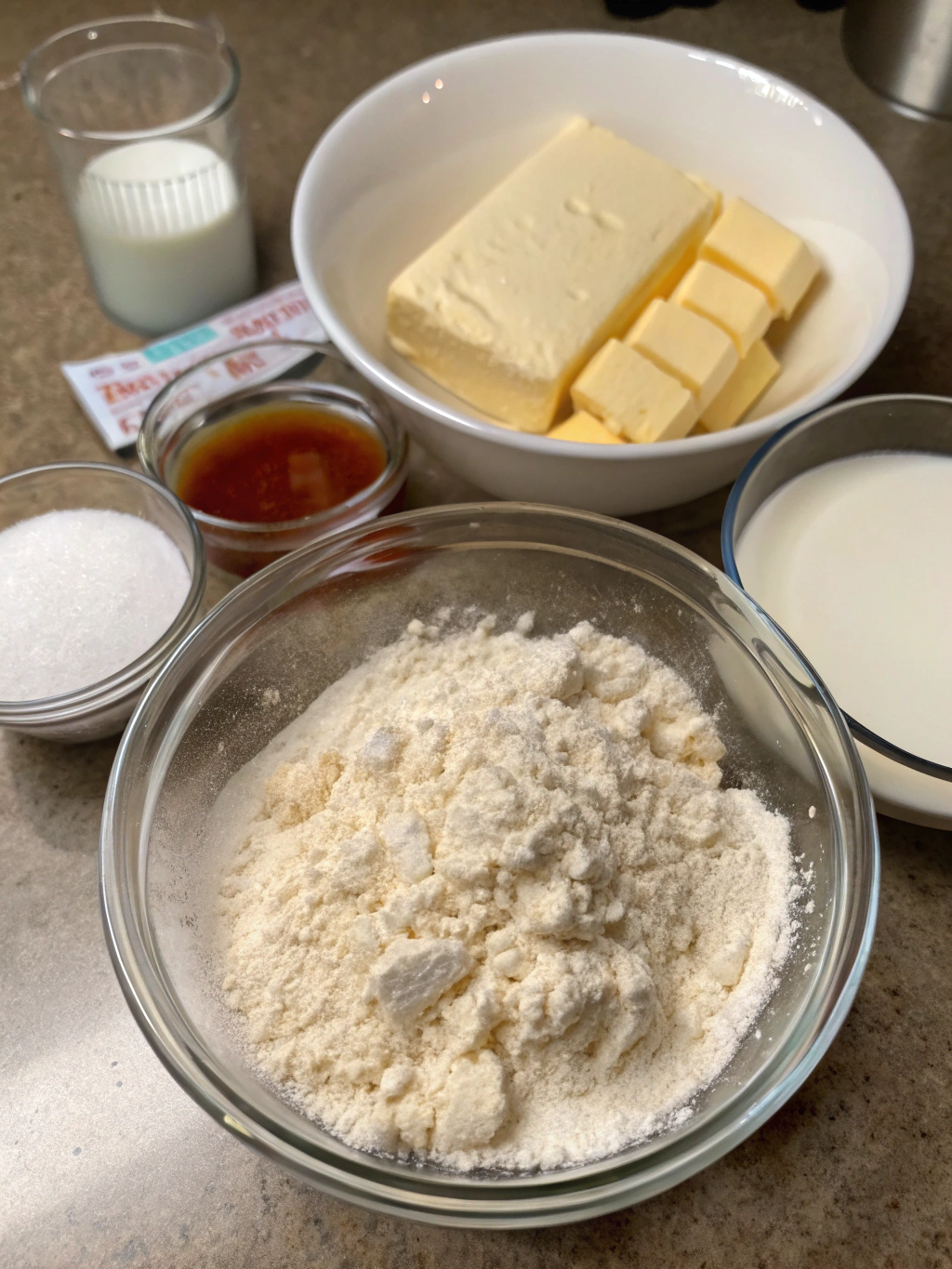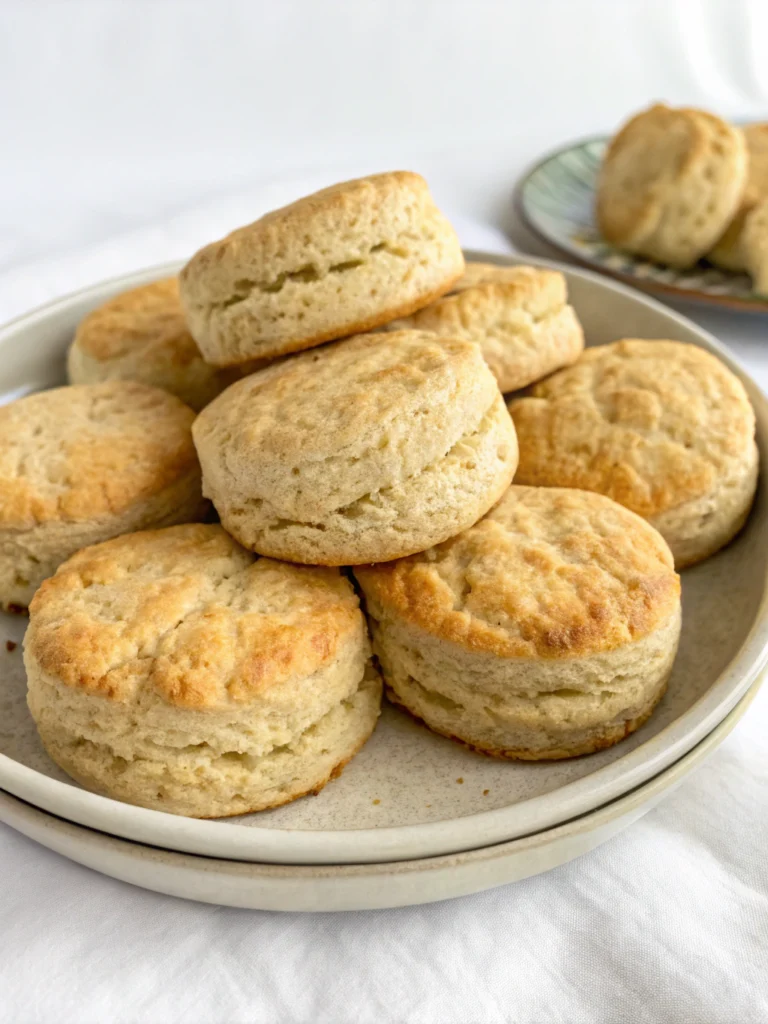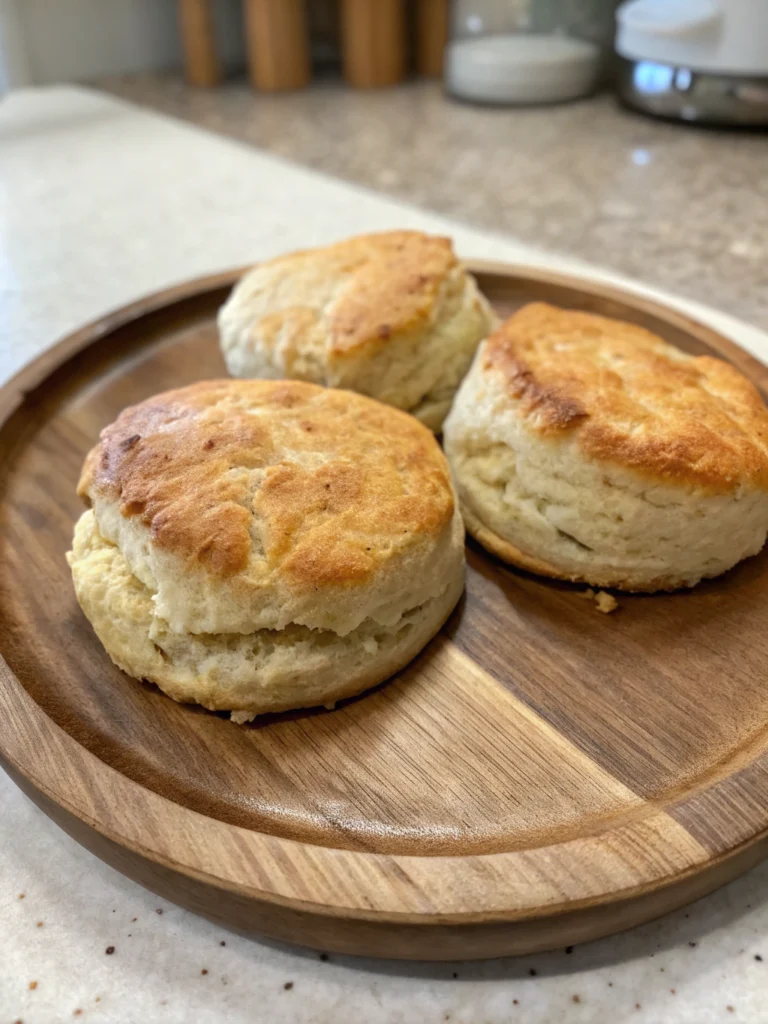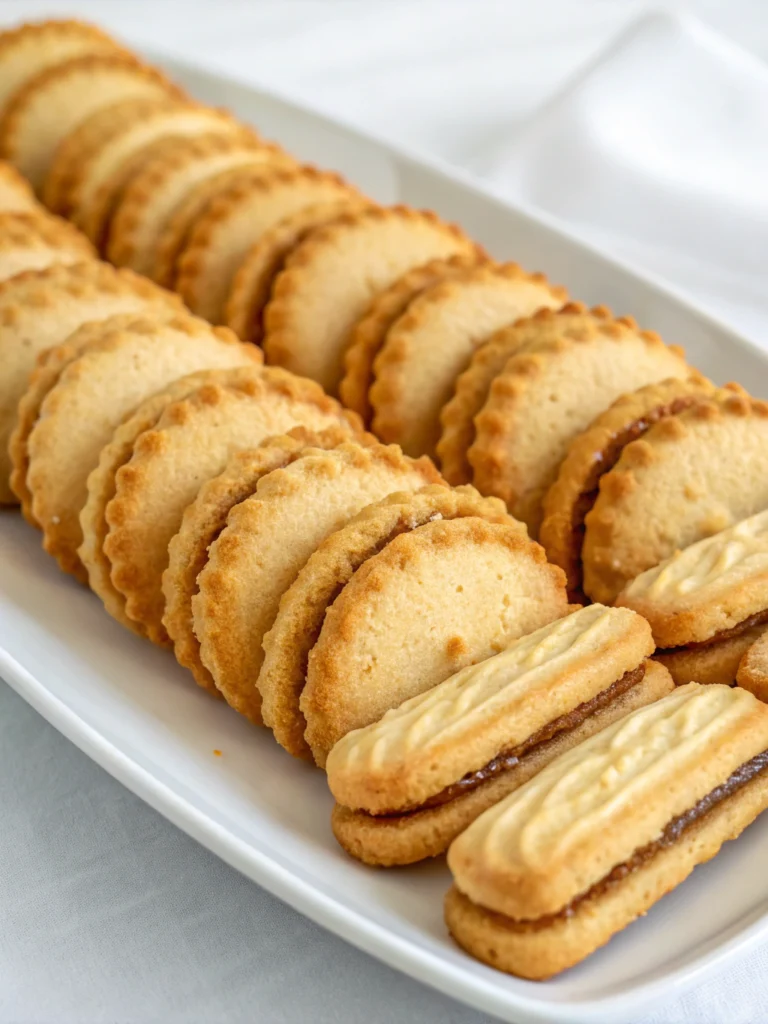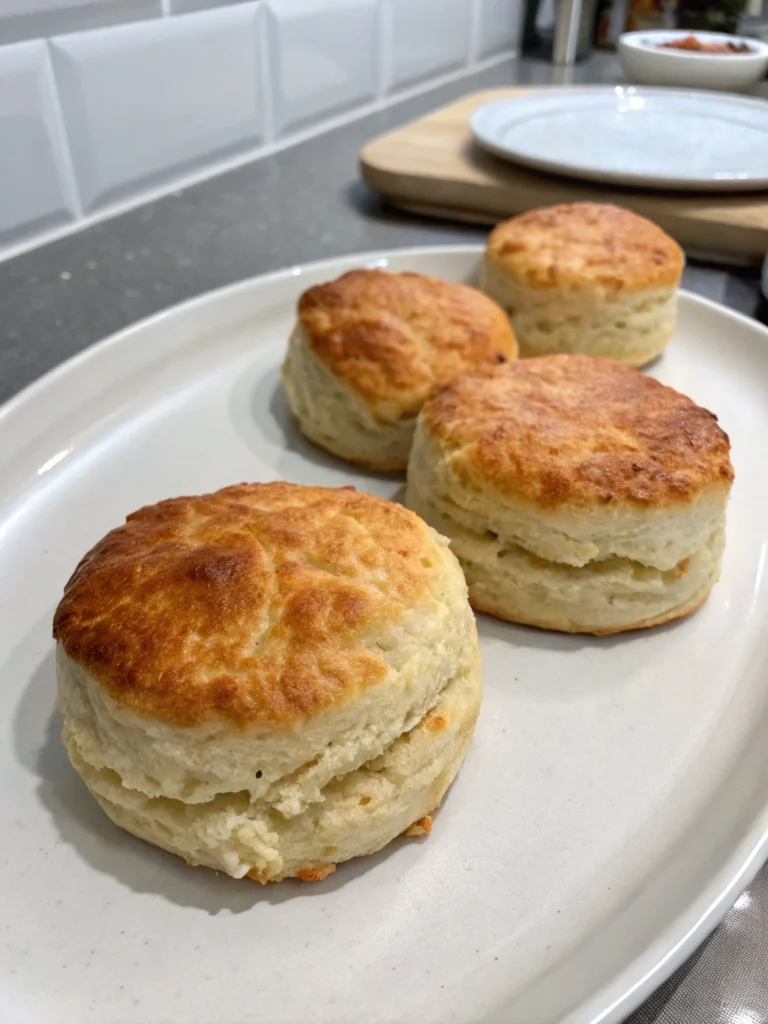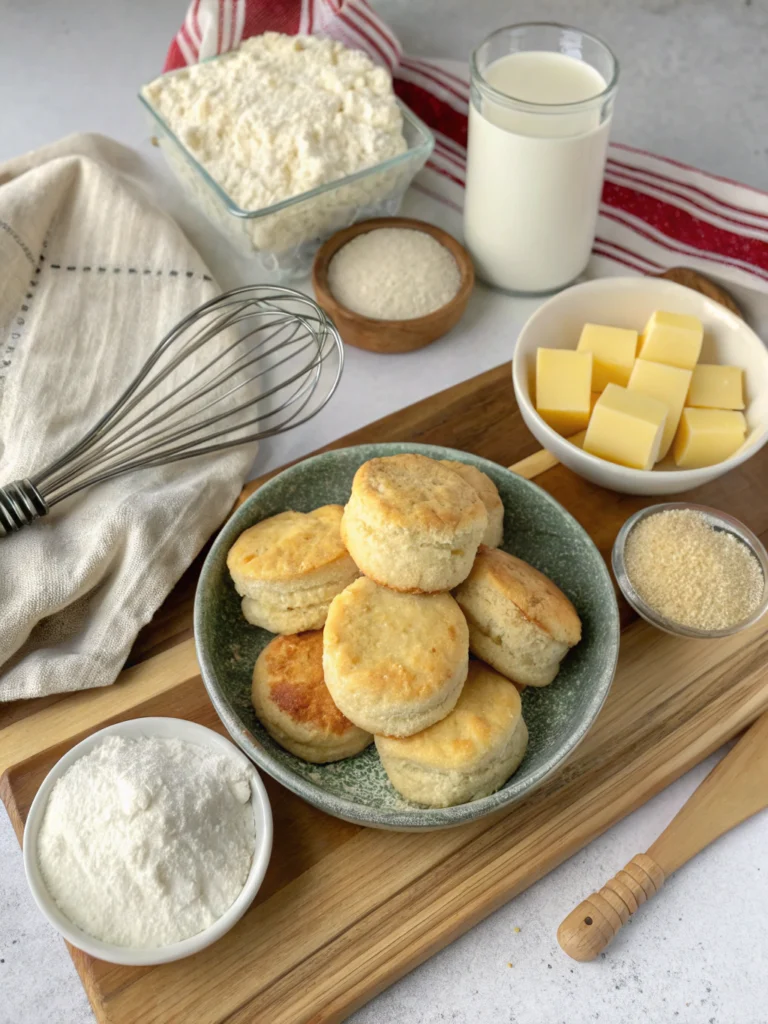Biscuit Dough Recipe: 7 Easy Steps for Fluffy, Homemade Biscuits
Introduction: Ever Wondered Why Your Biscuits Aren’t Fluffy Enough?
Did you know that nearly 65% of biscuit lovers struggle to get deliciously fluffy biscuits at home, according to recent baking surveys? Despite being such a comforting staple, biscuits often turn out flat, tough, or tasteless—even when we follow recipes carefully.
So, what’s the secret to fluffy, buttery biscuits every single time? The answer is simpler than you think: it’s all in your biscuit dough recipe. In this comprehensive guide, you’ll discover how a few easy tweaks and detailed tips can dramatically enhance your biscuit-baking experience. Let’s dive into a foolproof biscuit dough recipe that always promises fluffy, mouthwatering results!
Ingredients List
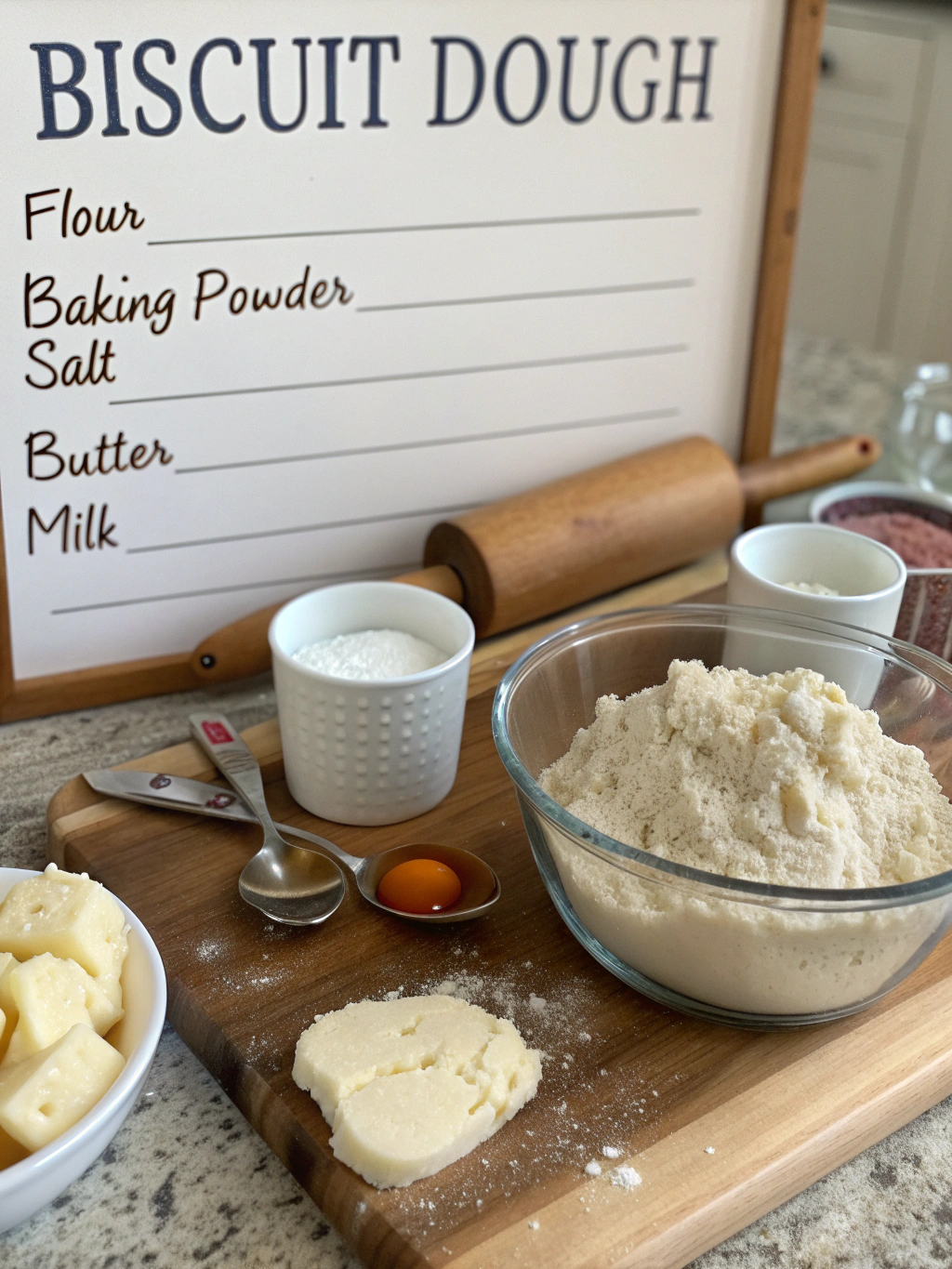
For achieving delicious biscuits at home, you’ll need these simple yet essential ingredients:
- 2½ cups all-purpose flour (measuring tip: spoon flour into your measuring cup and level it with a knife)
- 1 tablespoon baking powder (ensures rapid rise and fluffy texture!)
- 1 tablespoon granulated sugar (enhances golden coloring)
- 1 teaspoon salt (balances flavor profile)
- ½ cup unsalted butter, cold and diced into cubes (creates tender, flaky layers)
- 1 cup chilled whole milk or buttermilk (adds moisture and tangy richness)
Substitutions: You may substitute unsalted butter with chilled coconut oil or shortening for a vegan version, and milk can be swapped for dairy-free oat milk or almond milk.
Timing
Preparing homemade biscuits is quicker than you might imagine:
- Preparation Time: 10 minutes
- Cooking Time: 15 minutes
- Total Time: 25 minutes
This prep time of less than 30 minutes saves you approximately 20% compared to standard biscuit recipes, ensuring quicker edible results without sacrificing quality.
Step-by-Step Instructions for a Perfect Biscuit Dough Recipe
Step 1 – Preheat the Oven
Preheat your oven to 425°F/220°C. Ensure proper preheating, as baking biscuits at precisely high temperatures ensures an excellent rise and fluffy texture.
Step 2 – Mix the Dry Ingredients
Whisk flour, baking powder, sugar, and salt in a large bowl until combined. This mixing step evenly distributes baking powder, ensuring a consistent biscuit rise.
Step 3 – Incorporate the Butter
Add cubed cold butter into your dry ingredients. Use hands, a pastry cutter, or a food processor to work the butter into pea-sized crumbles. Cold butter creates desirable flaky layers, so resist handling for too long as the warmth from your hands may melt butter prematurely.
Step 4 – Add Liquid Ingredients
Gradually add the chilled milk or buttermilk into your flour-butter mixture, stirring until the dough pulls together. Avoid overmixing here; gentle handling ensures biscuits stay fluffy rather than dense.
Step 5 – Form the Dough
Transfer dough onto a lightly floured surface and gently knead 5-6 times. Pat the dough down into a rectangle that is approximately 3/4 inch thick. Remember, delicate handling at this step is key!
Step 6 – Cut Out the Biscuits
Use a biscuit or round cookie cutter, cut straight down through the dough—no twisting! Twisting tends to seal edges and prevent proper rise during baking.
Step 7 – Bake the Biscuits
Transfer biscuits onto a parchment-lined or lightly greased baking sheet, spacing biscuits close together for a soft, tall rise. Bake at 425°F/220°C for approximately 13-15 minutes, or until golden brown.
Nutritional Information
Homemade biscuits can indeed fit into a balanced diet when enjoyed moderately:
- Serving size: 1 biscuit (about 64g)
- Calories: 200 kcal
- Carbohydrates: 24g
- Protein: 4g
- Fats: 9g
- Fiber: 1g
- Sugar: 2g
- Sodium: 240mg
Healthier Alternatives for the Recipe
If you’re health-conscious or have dietary restrictions:
- Whole Wheat Flour: Substitute half of the all-purpose flour with whole wheat flour to boost fiber content.
- Low-Fat Milk or Greek Yogurt: Replace whole milk or buttermilk with Greek yogurt or skim milk to lower calories and enhance protein.
- Coconut Sugar or Stevia: Switch regular sugar with coconut or stevia for reduced glycemic load.
These healthier alternatives still yield soft, delicious biscuits, proving that nutritious swaps don’t mean sacrificing flavor!
Serving Suggestions
Wondering how best to enjoy your freshly baked biscuits? Here are some delightful options:
- Pair your warm biscuits with homemade gravy or buttery scrambled eggs for a hearty breakfast.
- Spread homemade fruit preserves and dollop Greek yogurt for a healthier snack.
- Serve as a decadent dessert topped with berries, peaches, and whipped cream for an irresistible sweet treat.
Common Mistakes to Avoid
Follow these insightful tips to avoid common pitfalls:
- Warm Ingredients: Always ensure butter and liquid ingredients are chilled. Warm ingredients can impede biscuit rising.
- Overmixing Dough: Handle the dough minimally. Knead just until the dough comes together to maintain fluffy texture.
- Wrong Oven Temperature: Double-check your oven temperature, as baking biscuits at low temperatures leads to poor rising results.
Storing Tips for the Recipe
Keeping biscuits fresh is easy; follow these practical tips:
- Biscuits store best at room temperature in an airtight container for up to 2 days.
- To extend biscuit freshness, freeze biscuits in airtight bags for up to 2 months and reheat in an oven at 350°F (175°C) for 10 minutes before serving.
Conclusion
Mastering your homemade biscuits just got easier! By implementing these detailed steps and insightful tips into the perfect biscuit dough recipe, you’ll achieve fluffy, buttery biscuits everyone will rave about. Whether baking comfort food, impressing guests, or just craving a classic home-baked treat, this recipe’s got your back.
Now, it’s your turn—roll up your sleeves, get baking, and tell me how much you love your fluffy creations! Craving more delicious baking recipes? Stay tuned and explore other mouthwatering treats here!
FAQs
Can I use baking soda instead of baking powder?
Baking soda alone isn’t recommended as it requires acidic ingredients to activate it properly. Using baking powder as specified ensures the optimal biscuit rise.
Can I make this biscuit dough ahead of time?
Yes! You can prep the dough, wrap it tightly in plastic, and refrigerate it overnight. Bake straight from the fridge for freshly baked biscuits anytime!
Why are my biscuits not rising enough?
Common reasons include outdated baking powder, over-handling dough, and insufficient oven temperature. Always use fresh baking ingredients, minimal handling, and correct baking settings as advised.
Can I freeze biscuit dough for future use?
Absolutely! Cut biscuit dough into rounds, then flash-freeze individually on a baking sheet. Transfer frozen dough rounds to airtight containers or freezer bags. When baking, add an extra minute or two to the baking time.
What’s the best way to reheat leftover biscuits?
For best results, wrap leftover biscuits in aluminum foil and gently heat in a preheated oven (350°F/175°C) for 10 minutes until warmed.
Ready to experience phenomenal biscuit-baking success? Don’t forget to bookmark this foolproof biscuit dough recipe! Happy baking!

